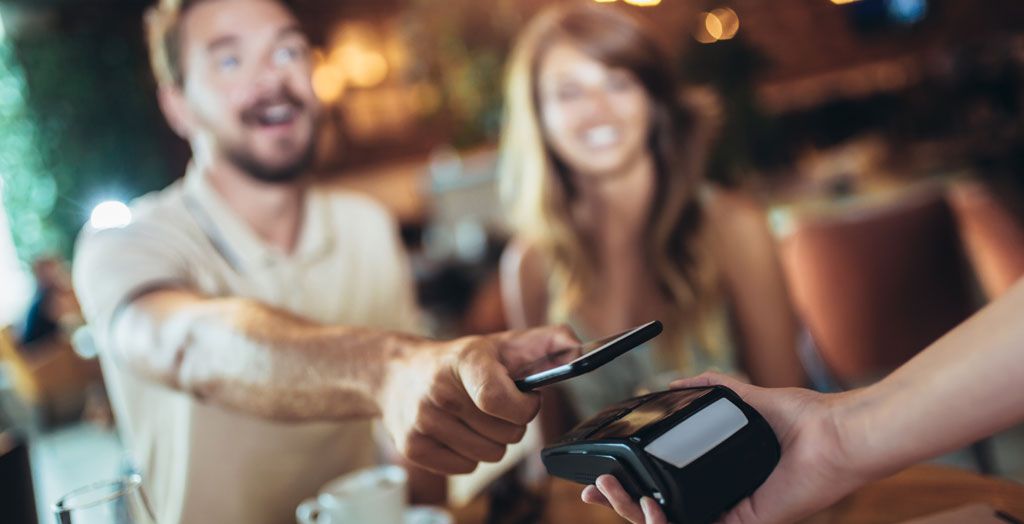
Among many things Covid-19 has changed, the pandemic has permanently transformed the way customers choose to pay.
Where once cash was king, contactless card payment now sits on top. In New Zealand, the payment method has increased 62% since 2018.
Compared to Kiwis, the preference for contactless payments is double across the ditch; with 82% Aussies tapping to pay.
In fact, the rapid adoption of contactless in Australia has gone mobile; with a study reporting that 83% of surveyed Aussies used a mobile digital wallet in the last year and 79% said they were comfortable enough to leave their physical wallet at home.
While this trend was globally already in motion, Covid-19 dramatically accelerated this growth; including in New Zealand. This has left many Kiwi retailers considering how to make the most of this shift.
Source: Reserve Bank, June 2021
So here's everything you need to know about:
How Coronavirus caused Kiwis to go contactless
It’s no secret that the pandemic caused New Zealand retailers to make some big changes – from providing a QR code for contact tracing to wearing a face mask and enforcing social distancing.
Another development was the sudden need to accept contactless payments.
Under the Covid-19 protection framework, to operate at Alert level 3, businesses were advised to conduct their operations in a contactless manner which included the way they accepted payments.
To help retailers, Payments NZ increased the contactless transaction limit from $80 to $200. At the same time New Zealand banks temporarily removed fees for contactless debit card transactions.
Merchants quickly put their hand up to enable contactless payments, and demand sky-rocketed. By the end of 2020, over half of the EFTPOS terminals in NZ were enabled to accept contactless payments.
And this was the critical tipping point.
As more businesses accepted these payments, more New Zealanders began to pay by Paywave, Tap & Go, Apple Pay, Google Pay and other methods. And as behaviours changed, so too did attitudes.
Contactless was no longer a nice-to-have for shoppers; it was an expectation.
This trend could also be seen in Australia which is one of the fastest adopters of this payment technology – with 60% of all Visa and Mastercard transactions being contactless. Nearly three quarters of Aussies now claim that contactless payments are here to stay.
Source: Mastercard, Contactless payment study 2018
Why contactless will continue to be important for retailers in 2022
While Covid-19 will pass and the traffic light system will go green, the shift to contactless payments is one of the trends set to stay in 2022 and beyond.
Among Kiwis who say using contactless payment methods more often was the biggest change in their payment behaviour during the pandemic, 60% report they are ‘likely/very likely’ to continue paying that way.
The Visa Back to Business 2021 study reported two thirds (65%) surveyed consumers say they would prefer to pay with a contactless method. They also surveyed merchants where younger SME owners believe that contactless payments are the future of payments. Millennials (80%) and Gen X owners (75%) strongly agree on consumer preference for contactless compared to their Boomer peers (61%).
Source: Visa, The Merchant Contactless Study
Accepting contactless payments can be a win-win
With so much demand for it, why is the adoption of this feature in New Zealand lower compared to our small business counterparts across the ditch? It’s simple. Aussie businesses have found a way to accept these payments, without the expense.
How? By applying an automatic surcharge to cover the cost.
When you do the math, it becomes a no-brainer. Imagine, as a small business your average transaction size is $30 and you turn over $15,000 per month. If everyone paid via contactless you’d end up paying $300 a month in merchant fees (based on a 2% fee per transaction) – but if you applied a 2% surcharge, each customer would only pay an extra $0.60 and you would ditch the extra merchant fees. And if the customer didn’t want to pay the surcharge? They could simply insert their card and pay by EFTPOS.
By enabling contactless payments with a surcharge – businesses are reducing their risk of customers walking out the door because they no longer carry a physical card. They are also able to keep prices low and maintain profits – enabling customers that wish to pay via contactless, but still offering a “free” payment method to customers not wanting to pay a surcharge. Now that’s a win-win!
How to start accepting contactless payments
If you’re with Smartpay and keen to get started with contactless payments, getting this switched on is easy. Simply call your merchant bank to get this setup, as soon as it is activated by the bank – your terminal will be automatically ready to go.
Since these payments are processed by schemes like Visa and Mastercard, your bank can help you with learning about the MSF packages that are available and choosing one suited to your businesses. Some handy tips to remember when enabling this feature:
- Negotiate the best rates – When talking to your bank, do your best to negotiate a good rate. Always ask if they can offer a better deal!
- Save on bank fees – You don’t have to absorb the fees to accept contactless payments – if you want to pass them on via a surcharge and are a Smartpay customer; give us a call to get this set up free of charge (if you’re not with Smartpay, it is best to check with your provider if they will charge you to enable this feature – or Switch to Smartpay to experience this and many more payment features for free!). We can easily configure the surcharge remotely and provide you with signage to place in your premises.
To learn more, contact the team at Smartpay today.